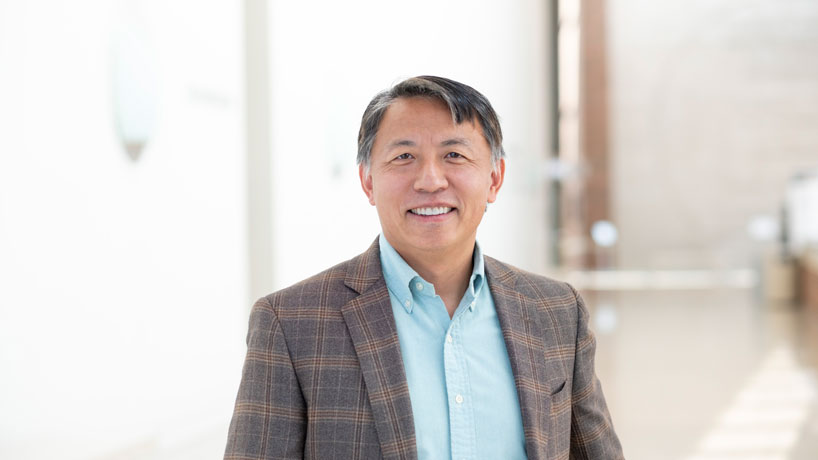
Haitao Li is part of a team of researchers from several universities working on methods to detect salmonella in the chicken supply chain. (Photo by August Jennewein)
Eating an omelet seems like a normal breakfast experience, but sometimes that meal can land a person in the hospital – or even worse.
The Centers for Disease Control and Prevention estimates that 48 million people get sick from foodborne diseases each year in the United States. Of those who fall ill, 128,000 are hospitalized and 3,000 die. The CDC provides estimates for two major groups of foodborne illnesses – known pathogens and unspecified agents.
Salmonella, a bacteria associated with chicken and eggs, is one of the top germs that cause foodborne illness, hospitalization and death.
A team of researchers, including Professor Haitao Li, who chairs the Department of Supply Chain Analytics at the University of Missouri–St. Louis, have been working to develop sensor technologies and a sensor-enabled decision-support system to detect and mitigate contamination in the chicken supply chain.
Li has been joined by colleagues at the University of Missouri–Columbia, Lincoln University, the University of Notre Dame and Auburn University in developing a sensor to detects salmonella contamination using a laser and fiber optic cables to sense minute concentrations of the bacteria. Harvest Public Media recently highlighted their work on its affiliate stations, including St. Louis Public Radio.
The researchers want to pair results from the sensors with data on food production, animal health, population health and additional geospatial information. But developing the sensors is just the beginning of the journey.
“Having the biosensor developed is not the end of the question,” Li told STLPR’s Eric Schmid, reporting for Harvest Public Media. “That is not enough.”
It also requires data-driven decision support to facilitate sensor-enabled food supply chain operations, including determining which biosensors work most effectively and placing them accurately throughout the supply chain process. Li is creating a model that will help with that as well as decide which sensor that’s developed by his colleagues will best meet a particular company’s needs.
Ideally, the sensor would be used in different stages of chicken processing, including washing, de-feathering, cutting, packaging, transportation and storage.
Down the line, the sensors could also potentially reduce some food waste.
The research team will seek additional funding from the National Science Foundation and others for the next phase of the project.
“This is a long-term, multiyear multi-disciplinary research effort,” Li told Harvest Public Media. “It’s not always easy, but I truly enjoy it.”
Read the full article on the St. Louis Public Radio website.














